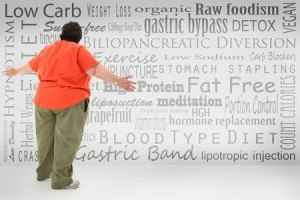Do you eat very little but still can’t lose weight? Do you suffer from unexplained migraines or nervousness, sweatiness, or shortness of breath? Any one of these symptoms might be your body trying to point at having some sensitivity to something you’re eating. In more extreme situations, these may be some of the phenomenon characterizing food allergies. How do you link these symptoms, the reason they started, and recognize what you are allergic to?

Food allergies are actually your immune system reacting to food that the body assesses, wrongfully, to be harmful. The moment the immune system has decided that a certain food is harmful, it develops antibodies against its digestion. This way, the next time that individual tries to eat this type of food, his immune system will release a massive amount of chemicals to protect the body, and those create symptoms that affect the body’s proper function.
Bodily intolerance to food is the body’s response to certain foods that arrive through the digestive system (for example, indigestion of lactose or gluten).
Among food intolerances is simulated intolerance, in which the body’s response is created by mental factors. Many people report, for example, they avoid eating bread because they can’t control how much they eat.
Contrary to common belief, food allergies are rare. Most cases are food sensitivities.
From itching to shortness of breath
Allergies and sensitivities to a certain food usually affect three main body systems: the respiratory system, the digestive system, and the dermis (skin).
Allergies are characterized by immediate and intense responses, expressed usually within 30 minutes, give or take, after the food has been consumed, even in a minor amount. Allergic reactions include: itching, a sense of burning and swelling around the mouth, runny nose, cramps followed by diarrhea, rash and skin eczema, shortness of breath and asthma, and nausea and vomiting.
Food sensitivity is characterized by symptoms that usually appear after a certain period of time, sometimes even after more than 48 hours. That’s why it’s harder to associate them with the actual cause. In fact, these symptoms will only appear after crossing a certain threshold of critical consumption that can only be determined individually. These signs can be: trembling, nervousness, sweatiness, rapid breathing, headaches and migraines, diarrhea, itchiness, a sense of burning in the skin, and shortness of breath.
Because food sensitivities disrupt the digestion process, they have harmful effects on metabolism and the ability to maintain weight.
Allergy “generators” and common food allergies
Of course, most foods can cause allergy or sensitivity, and the following list will help in identifying the primary suspects:
Food sensitivity generators:
- Dairy products: milk, cheeses and yogurt
- Chocolate
- Egg white
- Supplements like MSG, yellow food coloring (tadtrazin)
- Preservatives and yeast
- Stimulants: coffee, tea, coke-cola, sweets
- Wine, especially red
- Strawberries, citrus fruit
- Vegetables from the Nightshade family
Allergy generators:
- Eggs
- Peanuts (90% of children’s allergies)
- Milk
- Nuts
- Sesame
- Fish
- Soy
- Berries, tomato, eggplant, cucumber, potato and mustard
Those who suffer from food allergies are usually allergic to one or two types of food and will most likely stay allergic to that food for life.
In contrast, those who are sensitive to food usually find that they’re sensitive to a number of components and their sensitivity might disappear in time. For example, asthmatics will be sensitive to wine, bread, sausages and dried fruits.
How can we know if we are sensitive to some type of food?
In contrast to allergies, food sensitivities can’t be located through lab tests, but by a process called “the elimination diet.” This should be conducted under professional supervision, in order to accurately pinpoint all sensitivities and take care of them immediately.
You should suspect having sensitivity if the following symptoms appear:
| Symptoms | List of foods |
| Neurological disorders | Stimulants: coffee, tea, Coke/cola, sweets and chocolate |
| Flatulence, diarrhea | Beans, peanuts, hummus, lentils, soy beans and peas |
| Redness, dizziness, headaches, respiratory disorders | MSG, yellow food coloring (tadtrazin) and yeast |
| Mouth and tongue sores, itching skin, eczema | Volatile sulfur compounds in food (you can find them in the list of ingredients in products such as: wine, beer, certain yeast, dried fruits and vegetables, coke-cola, and fruit drinks) |
| From headaches to migraines, rash and itchiness | Cheeses, sardines, tuna and other canned fish, chocolate, beer, yeast, and red wine |
| Digestive problems, headaches | Artificial sweeteners |
Don’t get used to the symptoms, fight them
Some tend to get used to pains or bodily phenomenon and accept them as a way of life, while others might look for the reason but won’t find it. Only a few know how to report their food sensitivity.
As opposed to allergies, which in most cases are hereditary, relate to a specific type of food, and can be relatively easy to locate; food sensitivity might be less extreme in its effects but will have a significant impact on the quality of life.
Since there is a long list of “suspicious problematic components,” it’s harder to link the phenomenon and its source. Scientists believe this is why many people aren’t even aware that they suffer from food sensitivity.
Therefore, if you recognize unexplained symptoms, as described above, locate the source of the problem. Keep an eating journal, pay more attention to your body, or turn to professionals in the field.
Read the list of ingredients of every product. The best way to fight the phenomenon is to avoid problematic foods. This isn’t an easy task, since certain ingredients can appear in a wide variety of products.
Here’s an example:
- Milk – can be found in dairy drinks, milk powder, cheese, whey, yogurt, butter, ice cream, and lactose. It can also be a hidden component in cookies, granola bars, and cereal.
- Eggs – can be found in noodles, frozen products, cakes, cookies and casseroles.
- Peanuts – can be found in dry cookies, snacks, cereals, spreads.
- Artificial supplements – can be found in all food coloring and preservatives, in instant food and ready-to-eat meals. Also, check the content of yellow foods.
- Soy – can be found in soy beans, vegetable protein, soy lecithin, tofu and products based on these components.
- Gluten – can be found in wheat, rye, bran, oatmeal, cornstarch, barley and other grains. Also in pastries, pasta, sauces, dough products and snacks.
- Nightshade vegetables – among them are tomatoes, eggplant, peppers and potatoes, and the edible seeds inside them.
Most important: listen to your body. The more you listen and invest in maintaining it, the better the quality of life you’ll enjoy.




I started taking the Garcinia Cambogia a couple of months ago. I have gained weight about 8 #s, have had 10 migraines in a months time. I may only have a migraine in 6 months normally. I have had no energy, just feel bad.. Did not relate this to these pills until doing some reading. could not figure out why i did not lose weight. Any suggestions?
I am very allergic to mushroom of all types (an inherited allergy) and I can attest that my reaction is ASTRONOMICALLY more radical than anything you have described. My reaction is virulent and last for about four days of total incapacitation. I am horrified and very sick when I discover a friend or a restaurant that thought it could fool me, my reaction always lets me know. Eating out is always a challenge and today the owner & chef of the Chinese restaurant came to my table to explain he could not cook my choice because the soy sauce he purchased for the restaurant and kitchen was the more flavourful variety made with mushrooms.
Hi, HappySenior. The programs is overall fairly low in carbohydrates (& breads), about 45% of energy, compared to the usual 50-65%, with even less “available” carbohydrates. This may look high to people who have been on very restrictive diets – but remember, those diets are not sustainable and can lead to weight gain eventually. It is better to find a middle ground.
As for the vegetables, we encourage Clubbers to add “free” vegetables to those that appear in the Menu Planner.
Hi, blossom2112. If you are still struggling, please enter the forums under “Community” (above) and I will work with you.
I have found over the years that I have to keep the breads (even the good ones for me) very limited along with grains as they seem to put weight on me very quickly and I really don’t feel good with all the stuffiness that comes with eating them.
I am noticing this diet plan seems to have a lot of breads/grains instead of more vegetables which is what I thought I would learn how to put more of them (vegetables) together.
I have had coeliac disease since birth and have to stick to a stict gluten free diet. I am also diary intolerant. I do eat healthy foods such as fresh meat, fruit, vegatables and salads. I only drink water yet I have gained weight. I have gone from 52 kilos upto 60 kilos and in the last 4 weeks my weight has increased to 65 kilos.. Im so confused!!!